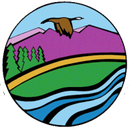

Coös County Conservation District
Our mission is to coordinate from all available sources public and private, local, state and federal in an effort to develop locally driven solutions to natural resource concerns.
Who We Are
The Coös County Conservation District (CCCD) was created in 1946 as a governmental subdivision of the state to provide local leadership and decision making for the protection of the land and water resources of the county. The CCCD represents conservation interest and priorities of the county. As such, the conservation district is fully vested in improving soil health and protecting water quality, and has a long history of managing collaborative projects which promote conservation practices. This includes hosting and promoting numerous education events and workshops throughout the region (such as 5th Grader Natural Resources Field Day, Pollinator Workshops and Soil Erosion Field Days).
This approach to conservation is what has stimulated our success in the years since our establishment as an organization. The CCCD will work with all available sources, public and private, local, state and federal in an effort to develop locally driven solutions to natural resource concerns.
Our Top Priorities –
- Erosion Control & Sustainability
- Stream Bank Restoration and Wildlife Habitat
- Forestry & Agricultural Best Management Practices
- Land Use and Conservation
- Soil Health
Our Goals –
- Promote and encourage producers to use best management practices for agriculture in order to help maintain the Counties natural resources
- Educate adults and youth in the topics of our priorities
How we can help…
- Set priorities
- Deliver information
- Provide administration, and technical assistance to cooperators, land users, schools and municipalities
- Sponsor projects
- Administer grants
- Work with local, state and federal agencies to deliver technical assistance
- Educate adults and youth on conservation
We encourage children of all ages to have fun and get to know their environment with activities such as:
- Educational Materials
- Coloring books
- Soil Education (K-12, and beyond)
USDA / Natural Resources Conservation Service
- 2018 Farm Bill
- Fish & Wildlife
- Water Quality
- Erosion
- Conservation Easements
- Web Soil Survey
- NH Soil Health
County Soil Health equipment for loan or rent –
High Tunnel Tool and Farm Equipment Rental Program
You can improve your corner of the world –
by practicing good stewardship at home –
- Composting food scraps and lawn clippings in your backyard.
- Conserving green areas in your urban neighborhood.
- Implementing best management practices on your farm.
Reduce, Reuse, Recycle – Learn how reducing, reusing, and recycling can help you, your community, and the environment by saving money, energy, and natural resources. Visit the website — Natural Resources Defence Council
What We Do
We work closely with Natural Resources Conservation Service (NRCS). As well as partner with agencies such as UNH Cooperative Extension, NH Fish & Game and various forest, wildlife and environmental agencies and experts to coordinate local events to provide access to a variety of programs.
Where We Are
Servicing the Northern top of the State, our office is located in the USDA Service Center on Mayberry Lane in Lancaster, NH.Located just off of Route 3, a wee bit north of the town, Mayberry Lane is about a half of a mile north of the Lancaster Fairgrounds.
About Coös County
Coös County covers the top fifth of New Hampshire, sharing a 71-mile straight border with Maine to the east, an 85-mile border with Vermont to the west, and a 58-mile border with Canada to the north. Grafton and Carroll Counties border the south. The White Mountain National Forest and Nash Stream State Forest cover a sizable portion of the county. Established in 1803, when it was separated from Grafton County.
Today, Coös County is over 200 years old and many of its people still have the sense of purpose and strength of character of the early explorers to this pathless wilderness area that was home to Abenaki tribes, trees and wild animals. The people who built our North Country society were hardy and courageous. Coös is an Indian word for “dwellers in the pine tree place”.
The county was named after the Indian word ‘cowass’ or ‘kohass,’ meaning ‘crooked river’ because of the bend in the Connecticut River.
Coös County contains 1,795.0 square miles of land area and 35.1 square miles of inland water area. Based on the 2010 Census population, the population density is 18.4 persons per square mile. Coös County includes one city, Berlin, 19 towns, and 23 unincorporated places, 16 of which are unpopulated. The county seat is Lancaster.
Population Trends: Coös County claimed the smallest population among New Hampshire’s ten counties in 2016, and has held that position since the 1990 Census. Prior to 1980, Belknap, Carroll, and Sullivan Counties all had fewer residents. Population in Coös County grew between 1950 and 1960, then experienced its greatest loss of population between 1960 and 1970, decreasing by 7.7 percent. After a small gain between 1970 and 1980, the county decreased in population over the next three decades. In 2016, the population dropped by 1,016 residents from 2010.


